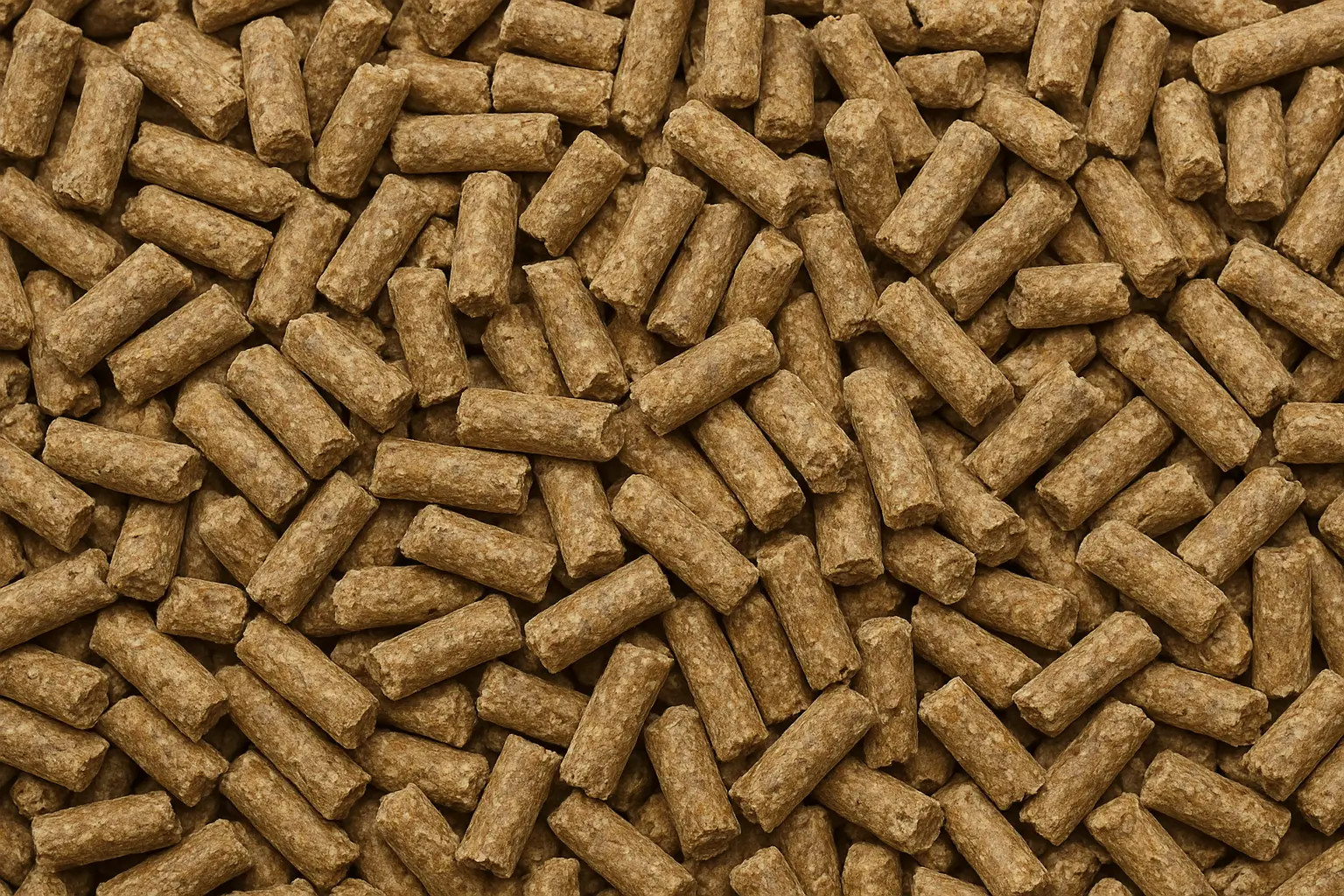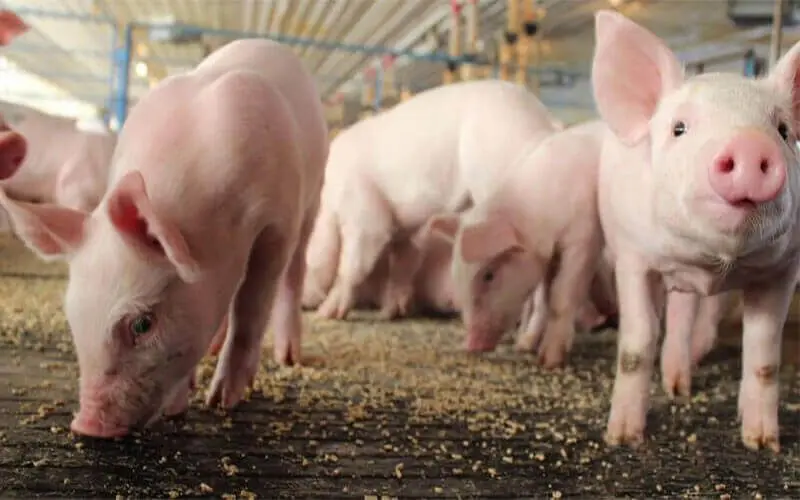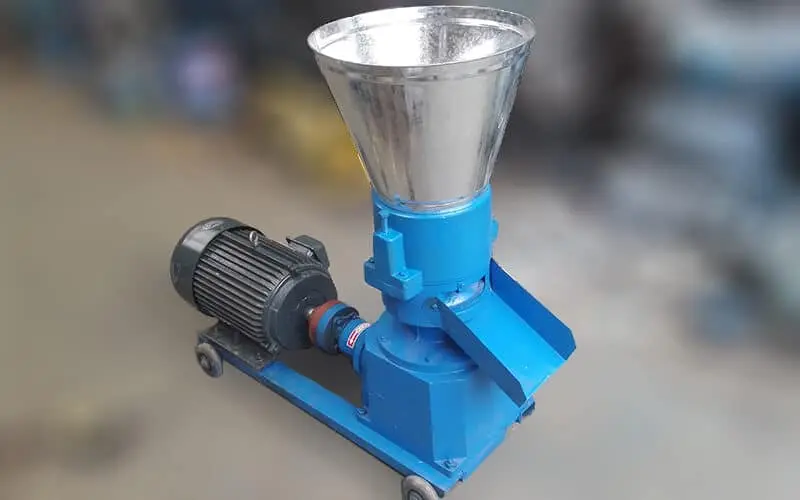Brief Introduction
As a pig farmer, you may invest in a lot of high-quality pig feed formulation. But if your pigs cannot eat the feed comfortably or they waste it, you will lose money. The secret is not just what is in the feed but the appropriate size of pig feed pellets. Matching the appropriate size of pig feed pellets to different pigs’ ages can improve feed intake, reduce waste, and boost the pigs’ performance in a powerful way.
Why Does Pellet Size Matter So Much for Pigs?
Choosing the right pig feed pellet size is a key management decision that directly impacts your farm’s success.
It Matches Their Ability to Eat.
A small piglet that has just been weaned cannot eat a big pellet made for a finisher pig. The right size makes young pigs eat more, especially right after they stop nursing.
It Reduces Feed Waste.
If the pellets are too big for a pig’s mouth, it might play with them, chew them poorly, and push them out of the feeder onto the floor. If the pellets are too small for a big pig, it might not eat its food as well. The right size cuts down on this expensive waste.
It Can Improve Digestion and Growth.
A pellet that is easy for a pig to eat helps it get the nutrients it needs quickly. This helps the whole herd grow at a more even rate and digest food better.

Starter / Piglet Stage (Weaning to ~25 kg)
At this stage, recommended pig feed pellet size is 2mm – 3.5mm or crumbles. The reason is at this starter stage, a piglet’s mouth, jaw and digestive system are very small and undeveloped. Small size pellets or crumbles are easy for them to pick up, swallow and digest. This can encourage them to take more feed pellets and give them a stronger and healthier body.
Grower Stage (Approx. 25 kg to 70 kg)
At grower stage the recommended pellet size is 4mm-6mm, because pigs grow and their mouth and body get bigger. They can easily eat larger pellets. Making larger pellet size is also more efficient and easier with pig feed pellet mill. Larger pellets also ensure growing pigs can consume the required daily food and nutrition quickly and easily.
Finisher Stage (Approx. 70 kg to Market Weight)
6mm-8mm pellets are better for finisher stage pigs. Because at this stage the main goal is to gain more weight efficiently with maximum energy. Larger pellets allow pigs to get more feed and energy in every mouthful. This can help to improve their average daily gain and overall feed efficiency when they approach market weight.
Sows and Boars (Breeding Stock)
For adult breeding pigs, the better pellet size is 8mm-12mm. Because they have large mouths and well-developed digestive systems. Large pellets are perfect for them. It can also help to reduce dust in the feed. For pig farmers, they can also handle and feed a large quantity of feed more easily.

How a Pellet Mill Achieves Different Sizes
You might wonder how you can make all these different sizes. It’s actually very simple.
- It’s All in the “Die”. The size of your feed pellet is controlled by a single, important part of your pig feed pellet machine is the die. The die is a heavy, thick steel plate with many small holes drilled through it. It acts as the mold for your pellets.
- You can change the pellet size through changing different die size. The size of the holes in the die will tell you how big your pellets will be. You need a die with 3mm holes to make a 3mm pellet for piglets. To make a 6mm pellet for growers, just stop the machine, take off the old die, and put on a new one with 6mm holes. This is a simple but important change that lets you fully control your feeding program.
Common Mistakes to Avoid
For the Smallest Piglets, Crumbles are Often Better Than Pellets.
A small 2.5mm pellet can be hard for a piglet that has just been weaned. That’s why a lot of businesses use a crumbler. This is a different machine that gently breaks a finished pellet, like a 3mm one, into smaller, uneven pieces. These “crumbles” are often easier for the smallest pigs to eat, which is very important in the first week.
Using the Wrong Size for Too Long.
One common and expensive mistake is to keep giving growing pigs small, expensive starter pellets for too long. You are wasting money. As soon as your pigs can handle it comfortably, you should switch to a larger, cheaper grower pellet.
Pellet Quality is More Than Just Size.
A pellet that is the right size but soft and dusty is still a bad pellet. The right size and hardness (durability) are what make a good pellet. Getting the right amount of moisture in your feed mash before it goes into the pellet machine is usually how this is done.

Conclusion
It is easy but very effective to match the size of your pig feed pellets to the stage of growth of your animals. You can cut down on waste, get more feed into your animals, and help the health and performance of your whole herd by using different dies in your pellet machine. For example, you can use small 2.5mm dies for piglets and larger 8mm+ dies for finishers and sows.
FAQ
Q: What happens if I feed pellets that are too big or too small to my pigs?
A: Young pigs might not be able to eat the pellets at all if they are too big, or they might have trouble eating them. This makes them eat less and grow more slowly. If the pellets are too small for a big finisher pig, it will take the pig longer and more energy to eat its daily ration, which is not as efficient.
Q: What is a “crumble” and how is it made?
A: A “crumble” is a finished pellet that has been broken into smaller, irregular pieces. It is made using a machine called a crumbler, which uses special rollers to crack the pellets. Crumbles are the ideal starter feed for very young piglets.
Q: Can I make all these different pellet sizes with just one machine?
A: Yes, one pellet mill can make pellets of different sizes. The die hole size determines the diameter, so all you have to do is change the dies. You should keep a small set (3, 4, 6, 8 mm) and change it as the pigs go from starter to grower to finisher.
Q: What is the best pellet size for a pregnant or lactating sow?
A: Adult sows have big mouths and can easily eat bigger pellets. A size of 8mm to 12mm is very common and works well. The size of the pellets is not the most important thing for sows. What matters most is making sure that the feed formulation gives her and her growing piglets the right nutrition.
Q: How do I know if my pellets are good quality, besides just the size?
A: A good pellet should not be soft or dusty; it should be hard and last a long time. It shouldn’t break easily when you touch it. You can check this by shaking a sample in your hands. The quality of your pellets may not be good if it makes a lot of dust. This usually happens when the feed mix was too dry before it was turned into pellets.
Q: Is pellet feed better than mash feed for pigs?
A: Yes, it is a lot better for two main reasons.
First, pellets stop food from going to waste. Pigs cannot spill or sort them like they can with a loose mash. Second, each pellet is a full meal that is balanced. This makes sure they get the right food they need to grow quickly and healthily.
